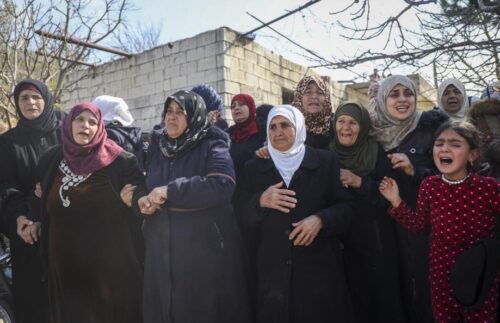KYIV — Russian and North Korean forces have made significant battlefield advances in recent days in the Kursk region of Russia, threatening Ukraine’s supply lines and its hold on a patch of land it hopes to use as a bargaining chip in future negotiations, according to Ukrainian soldiers, Russian military bloggers, and military analysts.
Working together, a new influx of North Korean soldiers and well-trained Russian drone units, advancing under the cover of ferocious artillery fire and aerial bombardment, have been able to overwhelm important Ukrainian positions, Ukrainian soldiers said.
“It’s true; we can’t stop them,’’ said Oleksii, commander of a Ukrainian communications unit fighting in the area, when reached by phone. “They just sweep us away, advancing in groups of 50 North Koreans while we have only six men on our positions.
“Decisions are being made here, but I don’t know how effective they will be,’’ he said.
If Ukrainian forces were cut off or forced to retreat, it would be a significant setback. Not only was the incursion into Kursk a signature operation that boosted morale and embarrassed President Vladimir Putin of Russia, but also holding territory in Russia gave Ukraine a potential bargaining chip in any peace negotiations. Pulling out could weaken its bargaining position at a moment when President Trump is trying to force through settlement talks.
On Friday morning, Trump, who has favored the Kremlin’s position in his public comments, turned the tables on Russia, saying he might impose new sanctions on that country if it kept bombarding Ukraine and did not engage in serious peace talks.
“Based on the fact that Russia is absolutely ‘pounding’ Ukraine on the battlefield right now,’’ Trump wrote on Truth Social, “I am strongly considering large scale Banking Sanctions, Sanctions, and Tariffs on Russia until a Cease Fire and FINAL SETTLEMENT AGREEMENT ON PEACE IS REACHED. To Russia and Ukraine, get to the table right now, before it is too late.’’
Ukrainian forces first swept across the border over the summer in an unexpected assault, overrunning unprepared Russian positions and securing a bridgehead of some 200 square miles around the Russian town of Sudzha, which sits about 6 miles from the border.
Russian and North Korean soldiers have retaken about two-thirds of the land lost in the summer — but at a horrendous cost, with at least 4,000 troops killed in combat, according to Ukrainian, South Korean, and Western intelligence estimates.
Ukrainian officials have said the offensive served multiple goals: thwarting a looming Russian offensive into the Sumy region of Ukraine, demonstrating that Western fears of escalation were overwrought, forcing Russia to divert resources away from the front line in Ukraine, and possibly serving as leverage in future peace negotiations.
The recent setbacks in Kursk have come as Ukrainian forces in eastern Ukraine have managed to stall Russian offensive efforts for months and largely stabilize their lines.
Three years into Russia’s full-scale invasion of Ukraine, Putin, who keeps tight control over all information in Russia, has paid no apparent political price for the military embarrassment in Kursk, even as the Kremlin has lost thousands of soldiers in grueling battles to drive the Ukrainians out.
As the battles dragged on, the Russians brought in an estimated 12,000 North Koreans to join the fight. North Korea was already supplying Russia with millions of artillery shells Moscow desperately needed, as well as artillery and ballistic missiles.
For months, Russian and North Korean forces have been attacking in some of the most ferocious clashes of the war, the intensity rising and falling but never really subsiding, soldiers said.
The North Koreans were forced to withdraw from the battlefield in January and regroup, but they soon returned.
President Volodymyr Zelensky of Ukraine said Feb. 8 that “Russia has once again deployed North Korean soldiers alongside its troops.’’ Four Ukrainian soldiers all said in interviews that North Koreans were at the vanguard of the latest waves of attacks, along with elite Russian drone units.
Ukrainian soldiers said the North Koreans were now better adapted to waging war on a battlefield that has been transformed by the proliferation of drones. They still engage in the same ferocious frontal assaults that led to so many casualties, but they are operating more cohesively.
“The North Koreans’ application of tactics is constantly improving,’’ said Andrii, a drone commander fighting in Kursk. They are working in better coordination with North Korean artillery units and supported by Russian drone operators, he said.
They have helped the Russians break through Ukrainian lines in the western part of the Ukrainian-held pocket near the border, south of Sudzha, according to DeepState, a group of analysts mapping the battlefield based on sources in the Ukrainian military; and open-source data like satellite imagery, photos and video posted on social media.

